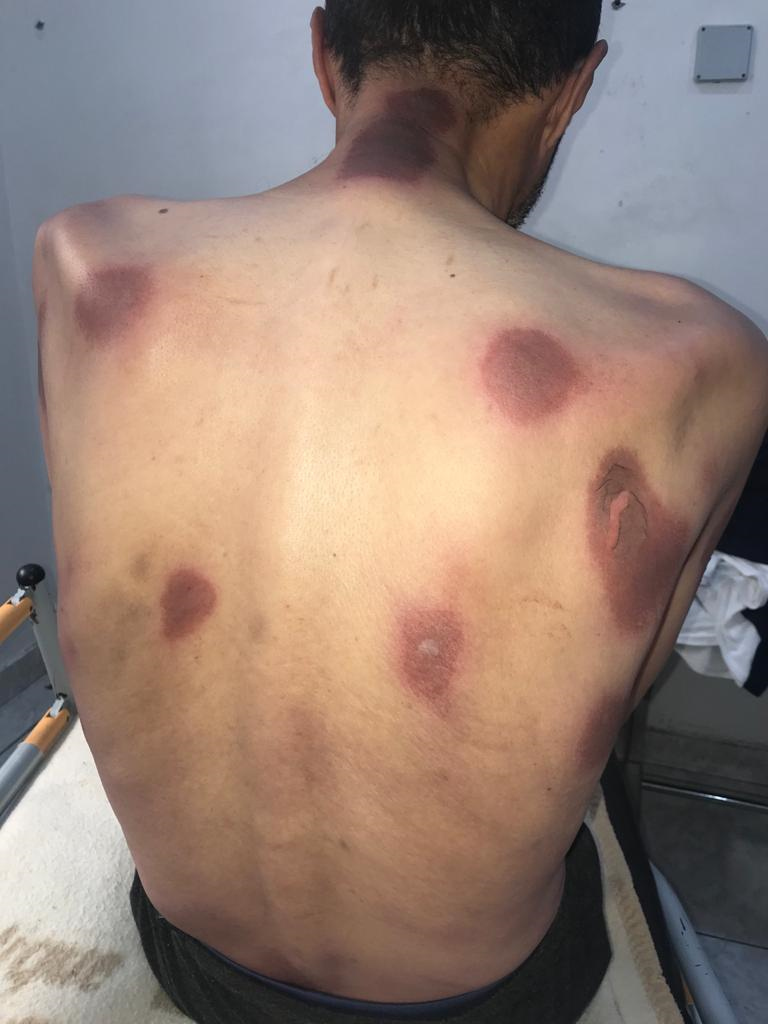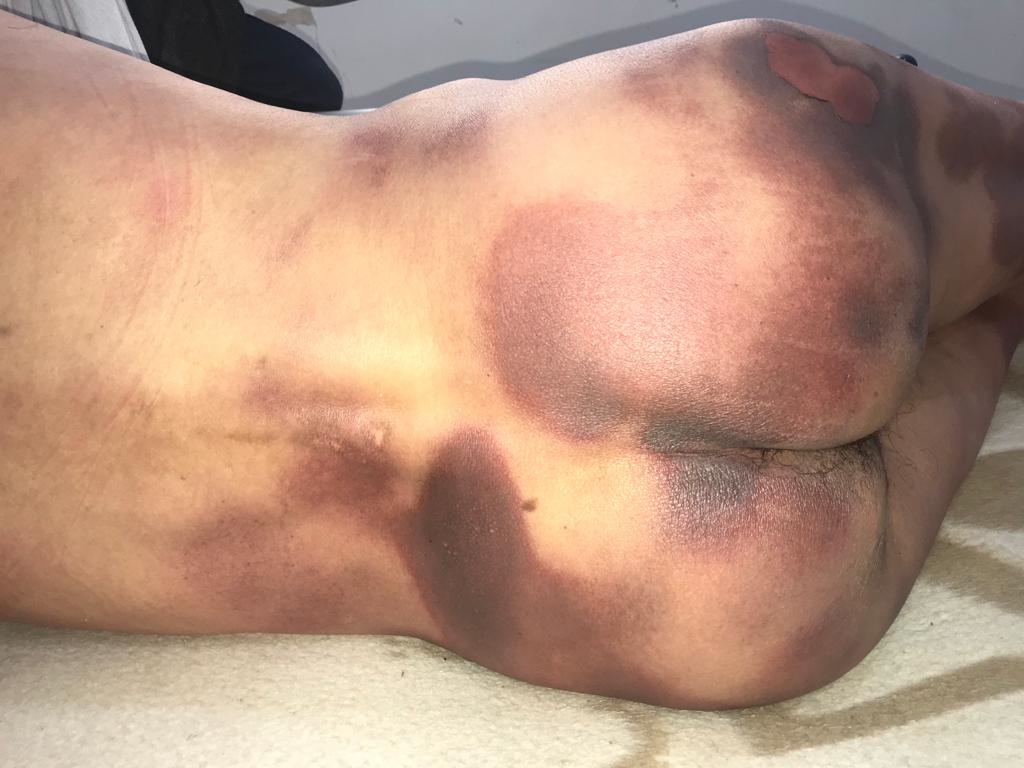Ryme Dassouli1*, Zakia Douhi1, Imane Kacimi1, Kenza Tahiri1, Hanane BayBay1, Sara Elloudi1, Fatima Zahra Mernissi1
1Department of Dermatology, University Hassan II, Morocco
*Corresponding Author: Ryme Dassouli, Department of Dermatology, University Hassan II, Morocco;
E-mail: [email protected]
Published Date: 30-04-2022
Copyright© 2022 by Dassouli R, et al. All rights reserved. This is an open access article distributed under the terms of the Creative Commons Attribution License, which permits unrestricted use, distribution, and reproduction in any medium, provided the original author and source are credited.
Editorial
Erythema Pigmentum Fixata (EPF) is a delayed-type toxidermia. It manifests itself within 48 h after the re-introduction of a drug by the appearance of a recurrent rash, leaving a residual hyperpigmentation [1]. We report a first case of erythema pigmentosa fixed to Nifuroxazide.
A 48-year-old man, chronic smoker, with a history of type 1 diabetes under insulin, having been amputated of the 4 limbs 5 years ago for ischemia of the limbs secondary to shepherd’s disease, suffering from a functional colopathy for which he often received symptomatic treatments includinf Nifuroxazide. The drug investigation revealed the ingestion of Nifuroxazide for a digestive episode after which he presented a rash composed of pruritic erythematous macules of the trunk and limbs with a 48-hour delay, evolving into post-inflammatory hyperpigmentation. The biopsy showed an interface dermatitis consisting of a predominantly lymphocytic infiltrate. The pharmaco-vigilance report accused Nifuroxazide. All the data allowed us to conclude to an erythema pigmentosa fixata. The patient did not present any more recurrence after eviction of the molecule.
Nifuroxazide is widely prescribed for its analgesic and anti-bacterial properties in various digestive diseases, including functional colopathy. Nifuroxazide, identified as a stat 3 inhibitor, has also proven to be effective in the treatment of certain tumor pathologies, due to its anti-tumor properties and ability to induce apoptosis [2]. Numerous adverse effects have been reported with nifuroxazide, particularly in the skin: urticaria, allergic reactions, angioedema, and anaphylactic shock.
EPF is most often benign. More rarely, it may be bullous and extend to the oral and genital mucosa. A pharmacovigilance investigation is necessary to establish the causal link between the EPF and the responsible drug. The diagnosis of EPF is clinical, characterized by the reappearance of lesions at the same site of the initial outbreak after reintroduction of the offending drug [3].
Discontinuation of the offending drug must be formally and permanently indicated [3].
Usually, the drugs most frequently responsible for EPF are sulfonamides, nonsteroidal anti-inflammatory drugs, and tetracyclines, although this frequency may vary according to consumption habits and the emergence of new drugs [4].
It is recommended to carry out patch tests on the site previously affected by EPF and this seems to be more appropriate when several molecules are attributable [4].
Indeed, our observation is the first case of EPF induced by nifuroxazide reported in the literature (Fig. 1-3).

Figure 1: Rounded purplish erythematous patches with regular contours on the back and neck.

Figure 2: Rounded purplish erythematous patches with regular plaques on the back and neck.

Figure 3: Rounded purplish erythematous patches with regular plaques on the buttocks and lower back.
Keywords
Pidmented Fixed Erythema; Nifuroxazide; Reccurence
Consent
The examination of the patient was conducted according to the principles of the Declaration of Helsinki. The authors certify that they have obtained all appropriate patient consent forms, in which the patients gave their consent for images and other clinical information to be included in the journal. The patients understand that their names and initials will not be published and due effort will be made to conceal their identity, but that anonymity cannot be guaranteed.
Conflict of Interest
The authors declare that they have no conflict of interest.
References
- Fayt G, Lejeune C, Arco D, Higuet S. News Skin lesions: a case report of fixed drug eruption. Rev Med Brux. 2017;38:439-41.
- Luo Y, Zeng A, Fang A, Song L, Fan C, Zeng C, et al. Nifuroxazide induces apoptosis, inhibits cell migration and invasion in osteosarcoma. Invest New Drugs. 2019;37:1006-13.
- Lakhoua G, El Aidli S, Zaïem A, Sahnoun R, Kastalli S, Hedi Loueslati M, et al. Fixed pigmented erythema antihistamine H1: about 2 cases and review of the literature. Therapie. 2014;69:243-4.
- Valeyrie-Allanore L, Lebrun-Vignes B, Bensaid B, Sassolas B, Barbaub A. Fixed pigmented erythema: Epidemiology, physiopathology, clinical features, differential diagnosis and therapeutic management. Annales Dermatologie Venereol. 2015;142(11):701-6.
Article Type
Editorial
Publication History
Received Date: 09-04-2022
Accepted Date: 22-04-2022
Published Date: 30-04-2022
Copyright© 2022 by Dassouli R, et al. All rights reserved. This is an open access article distributed under the terms of the Creative Commons Attribution License, which permits unrestricted use, distribution, and reproduction in any medium, provided the original author and source are credited.
Citation: Dassouli R, et al. Nifuroxazide Erythema Pigmented Fixed: A Side Effect to Be Aware Off. J Dermatol Res. 2022;3(1):1-4.

Figure 1: Rounded purplish erythematous patches with regular contours on the back and neck.

Figure 2: Rounded purplish erythematous patches with regular plaques on the back and neck.

Figure 3: Rounded purplish erythematous patches with regular plaques on the buttocks and lower back.


